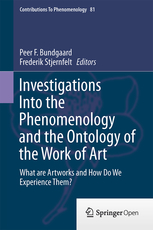
This book investigates the nature of aesthetic experience and aesthetic objects. Written by leading philosophers, psychologists, literary scholars and semioticians, the book addresses two intertwined issues. The first is related to the phenomenology of aesthetic experience: The understanding of how human beings respond to artworks, how we process linguistic or visual information, and what properties in artworks trigger aesthetic experiences. The examination of the properties of aesthetic experience reveals essential aspects of our perceptual, cognitive, and semiotic capacities. The second issue studied in this volume is related to the ontology of the work of art: Written or visual artworks are a specific type of objects, containing particular kinds of representation which elicit a particular kind of experience. The research question explored is: What properties in artful objects trigger this type of experience, and what characterizes representation in written and visual artworks? The volume sets the scene for state-of-the-art inquiries in the intersection between the psychology and ontology of art. The investigations of the relation between the properties of artworks and the characteristics of aesthetic experience increase our insight into what art is. In addition, they shed light on essential properties of human meaning-making in general.
Buy it on Springer.
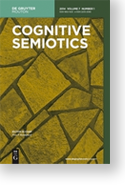
Cognitive Semiotics is a peer-reviewed, multidisciplinary journal devoted to high-quality research, integrating perspectives, methods and insight from cognitive science, cognitive linguistics and semiotics, placing meaning-making into the broader context of cognitive, social, and neurobiological processes. The journal is a platform for the study of meaning-making writ large: in our interactions with the surroundings in all domains, in the natural as well as in the social world, in language and other sign vehicles, as well as in perception, and in action.
All articles from issues 1 through 5 can be downloaded for free. Click here.
More information and subscription.
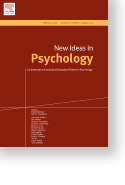
The contributors to this issue of New Ideas in Psychology pursue a radically different approach, that of language as an interaction system (Bickhard, 2007a). Like any human behavior, language is considered an open, multi-modal system, deeply embedded in and shaped by continuous functional interactions with the surrounding social, cultural and material environment (Dale, Fusaroli, Duran, & Richardson, 2014; Lupyan & Dale, 2010; Rączaszek-Leonardi & Kelso, 2008; Tylén, Fusaroli, Bundgaard, & Østergaard, 2013). Consequently, the study of language shifts its focus from individual inner linguistic representations to the public perceivable and communicational nature of linguistic forms (Fowler, 2013; Port, 2007). The primary goal of linguistic activity is not to construct well-formed sentences, but to maintain and regulate social affiliation and relations, share experiences and accomplish joint goals, etc. In other words, language is first and foremost a matter of coordination: coordination between interlocutors and their linguistic behaviors, between contexts and communities, between different time scales of linguistic processes, etc. (Beckner et al., 2009; Bickhard, 2009; Fusaroli & Tylén, 2012; Greenspan & Shanker, 2007). However, the approach to language as coordination dynamics present us with (at least) three fundamental challenges: i) How do we model language as coordination and what are the consequences? ii) If language is an open system, how do we then define and demarcate the object of scientific inquiry? iii) If grammaticality and acceptability are not by themselves the primary goals of linguistic processes how do we assess the functionality of language?
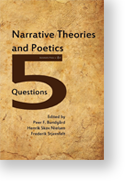
Excerpt from the book's preface:
In the present interview book, Narrative Theory and Poetics: 5 Questions, eminent narratologists, literary scholars, poeticians, stylisticians and philosophers answer five simple and broad questions. As is generally the case in the 5 Questions Series, the questions are intended to give the authors an occasion to outline their intellectual biography -- in whatever detail they find necessary, with or without the anecdotes of life -- as well as to lay down their idea of the state of the art of the domain of research to which they have devoted their work including the future challenges and unsolved issues it is still ripe with ...
Edited by Peer Bundgaard, Henrik Skov Nielsen and Frederik Stjernfelt
Automatic Press / VIP, 2011
ISBN 9788792130426
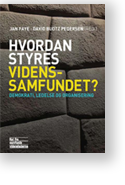
Debatten om ledelse og styring af landets universiteter kører på fuldt blus i disse dage. Der er fokus på, hvad de nye krav til forskere og studerende betyder for universiteterne og deres evne til at skabe viden. Men hvordan skal vi forholde os til debatten, og hvor fører den hen? Det giver denne bog nogle fagligt funderede bud på.
400 sider | 398 kr.
ISBN: 978-87-768-3026-7
1. udgave 2012
Forlaget Nyt fra Samfundsvidenskaberne
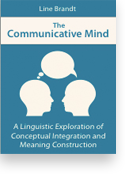
Advancing a research approach to meaning construction connecting Linguistics, Philosophy, Literary Studies, Neurophenomenology, Cognitive Science and Semiotics, The Communicative Mind presents an interdisciplinary exploration of the various ways in which the intersubjectivity of communicating interactants manifests itself in language. The book supports its view of the mind as highly conditioned by the domain of interpersonal communication by an extensive range of empirical linguistic data from fiction, poetry and everyday discourse. Among recent theoretical advances in what Brandt refers to as the cognitive humanities is Fauconnier and Turner’s theory of conceptual integration which, offering a bridge between pragmatics and semantics, has proved widely influential in Cognitive Poetics and Linguistics. With its constructive criticism of Fauconnier and Turner’s hypothesis that the “blending” of mental spaces is a general mechanism of cognition, Brandt’s book brings the scope and applicability of Conceptual Integration Theory into the arena of scientific debate.
Preview available: http://www.amazon.com/The-Communicative-Mind-Exploration-Construction/dp/1443841447